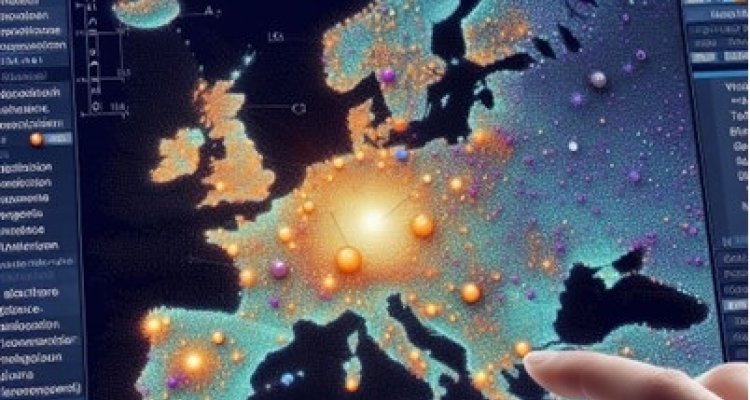
Student information
MSc thesis topic: Mapping movements of knowledge based on bibliographic data
The useful knowledge project is a collaboration between the economic history group of Wageningen University and the London School of Economics. The project aims to gain a better understanding of the drivers of knowledge production, and more specifically scientific knowledge, in Western Europe over the long stretch of time (800 – 1800). One of the methods to identify these drivers is to identify spatio-temporal patterns of written text and compared with historical occurrences. For example, we assume that the production of high value information follows the same broad patterns as economic growth.
In a previous thesis a method was developed to study point patterns of authors from roughly 1461 to 1800. Using a Space Time Kernel Density Estimator (STKDE) developed by Yu et al (2018) and implemented by Lucas Koren, hotspots of authors in space and time are identified and patterns are discussed. As Koren shows, this and other methods can be used to quantify patterns based on these datasets. This thesis will continue on this work. Some possible research directions are described below.
Knowledge in the form of written text (books, articles) is being classified into knowledge categories (religion, science). This written text is linked to georeferenced datasets of the locations of authors (the Virtual International Authority file (VIAF), and the Short Title Catalogue). Patterns of hotspots in time and space of the generation of knowledge might be linked to historical occurrences and show relationships with characteristics administrative areas on multiple scales.
Objectives and Research questions
Specific research questions will be adapted to outcomes and recommendations from Lucas Koren and project partners. We are also open for ideas from students. Some ideas and possible lines of thinking are posed below.
- How does the distribution of knowledge on a specific topic change over time and space? Can we link this movement to specific historical events?
- Does all knowledge move in the same way? Can we identify clusters of topics or authors based on movement patterns and what characterizes these clusters?
- Can we validify and improve the method as developed by Lucas Koren?
Requirements
- Current code and methodology has been developed in Python
Literature and information
- Koren, L. [Unpublished manuscript], Mapping the onset of Modern Economic Growth: A regional approach using authors and library holdings
- Koschnick, J. (2023). Teacher-directed scientific change: The case of the English Scientific Revolution.
- Chaney, E. (2018). Religion, Political Power and Human Capital Formation: Evidence from Islamic History
- Chaney, E. (2022). Modern Library Holdings and Historic city Growth (Unpublished manuscript, downloaded from: https://sites.google.com/site/ericjustinchaney).
- Hu, Y., Wang, F., Guin, C., & Zhu, H. (2018). A spatio-temporal kernel density estimation framework for predictive crime hotspot mapping and evaluation. In Applied Geography (Vol. 99, pp. 89–97). Elsevier BV.
Theme(s): Modelling & visualisation